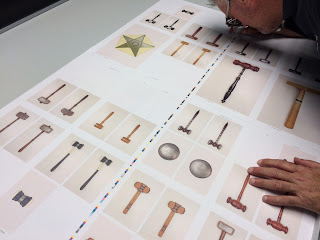What can Read Not Dead, Globe Education's Leverhulme-funded early-modern resuscitation team, do with a less performable text? Samuel Daniel's The Queen's Arcadia, another play written for royalty (King James I's consort, Queen Anne of Denmark), was first performed in the blurry acoustic of Christ Church hall, Oxford, in 1605.
Think Love Island without the profondeur. There are lovelorn nymphs and shepherds (one suicidal), slick poetry by the yard and a section about the evils of smoking designed to flatter King James I, author of A Counterblaste to Tobacco.
 |
| One day you're Dean of Christ Church, next you're so much lumber |
On a CPR course I was mortified to break five ribs on the dummy but the trainer shrugged... And Read Not Dead's bone-cracking techniques are what's needed to keep the patient alive. They scamper through the text before the public performance, then they read for their lives, moving as much as they can in limited territory, improvising to get out of scrapes, galvanised by currents of mutual support. Their risk-taking provides the drama when the text sags.
All the cast had the enlivening qualities the loyal Read Not Dead audience expect: I particularly liked David Collins and Colin Blumenau as the 'ancient Arcadians' propping up idealism, John Hopkins and Sid Sagar making the best of the stock 'funny' doctor and lawyer, and Ross O'Donnellan for a breath of fresh air and cute-toy-dog-handling skills as the shepherd Carinus. The programme note makes a brave attempt at spelling dastardly ('darstedly').
 |
| Prop dog politely ignores bread on floor |
Nothing catches my heart more today than seeing shepherd's purse in the pavement opposite Worcester College:
Here's my sheep-crook and my black dog, I give it to you.
Here's my bottle and my budget, I bid it adieu.
Here's my sheep-crook and my black dog, I leave them behind.
Fine laurel, fine floral, you've proved all unkind...
- From Sheep-crook and Black Dog, English folk song







